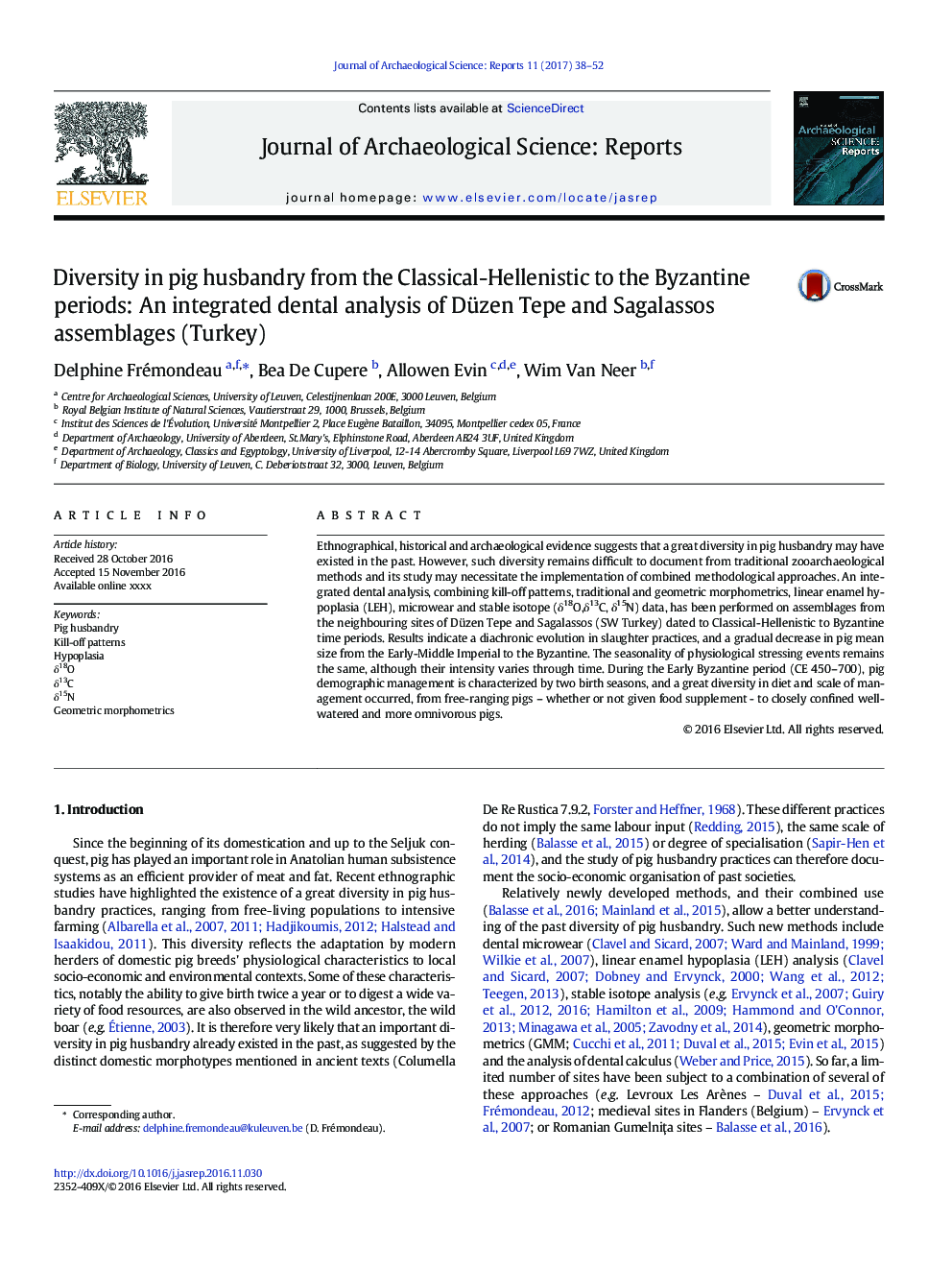| کد مقاله | کد نشریه | سال انتشار | مقاله انگلیسی | نسخه تمام متن |
|---|---|---|---|---|
| 5112547 | 1483932 | 2017 | 15 صفحه PDF | دانلود رایگان |
عنوان انگلیسی مقاله ISI
Diversity in pig husbandry from the Classical-Hellenistic to the Byzantine periods: An integrated dental analysis of Düzen Tepe and Sagalassos assemblages (Turkey)
دانلود مقاله + سفارش ترجمه
دانلود مقاله ISI انگلیسی
رایگان برای ایرانیان
کلمات کلیدی
موضوعات مرتبط
علوم انسانی و اجتماعی
علوم انسانی و هنر
تاریخ
پیش نمایش صفحه اول مقاله

چکیده انگلیسی
Ethnographical, historical and archaeological evidence suggests that a great diversity in pig husbandry may have existed in the past. However, such diversity remains difficult to document from traditional zooarchaeological methods and its study may necessitate the implementation of combined methodological approaches. An integrated dental analysis, combining kill-off patterns, traditional and geometric morphometrics, linear enamel hypoplasia (LEH), microwear and stable isotope (δ18O,δ13C, δ15N) data, has been performed on assemblages from the neighbouring sites of Düzen Tepe and Sagalassos (SW Turkey) dated to Classical-Hellenistic to Byzantine time periods. Results indicate a diachronic evolution in slaughter practices, and a gradual decrease in pig mean size from the Early-Middle Imperial to the Byzantine. The seasonality of physiological stressing events remains the same, although their intensity varies through time. During the Early Byzantine period (CE 450-700), pig demographic management is characterized by two birth seasons, and a great diversity in diet and scale of management occurred, from free-ranging pigs - whether or not given food supplement - to closely confined well-watered and more omnivorous pigs.
ناشر
Database: Elsevier - ScienceDirect (ساینس دایرکت)
Journal: Journal of Archaeological Science: Reports - Volume 11, February 2017, Pages 38-52
Journal: Journal of Archaeological Science: Reports - Volume 11, February 2017, Pages 38-52
نویسندگان
Delphine Frémondeau, Bea De Cupere, Allowen Evin, Wim Van Neer,